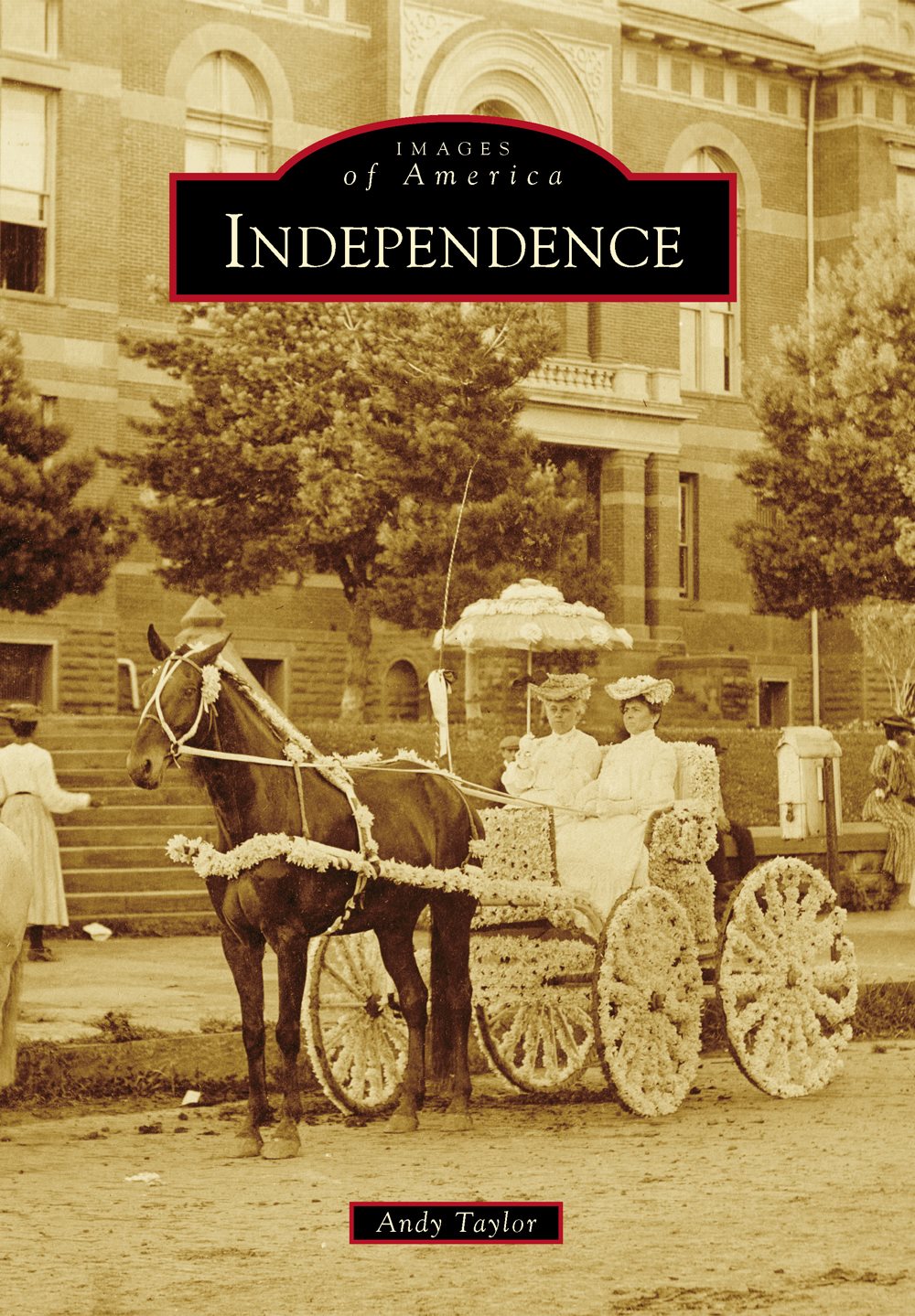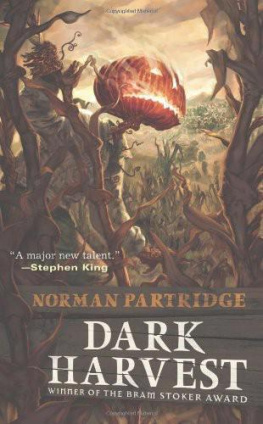
IMAGES
of America
INDEPENDENCE

Just three years before this birds-eye view of Independence was printed in 1872, Independence was given the nickname Haytown by bands of Osage Indians who traded with settlers in their crudely built homes with hay-covered roofs. Independences spirit abounded in its infancy and took root quickly, as exemplified by the number of streets that were laid out in its early years. The commercial buildings congregated on the towns two largest thoroughfares, Pennsylvania Avenue and Main Street. Both roads lead to the nearby Elk and Verdigris Rivers. (Courtesy of Ned Stichman collection.)
ON THE COVER: Some of Independences leading ladies donned flowery hats and festooned their buggy with flowers in an 1896 event that showcased themselves and their horse-drawn transportation. Pictured in front of the Montgomery County Courthouse are Ida E. Wood (left) and Katherine Whitman in the buggy and Anna Whitman on the white horse on the back cover.
IMAGES
of America
INDEPENDENCE
Andy Taylor

Copyright 2014 by Andy Taylor
ISBN 978-1-4671-1261-1
Ebook ISBN 9781439647851
Published by Arcadia Publishing
Charleston, South Carolina
Library of Congress Control Number: 2014934907
For all general information, please contact Arcadia Publishing:
Telephone 843-853-2070
Fax 843-853-0044
E-mail
For customer service and orders:
Toll-Free 1-888-313-2665
Visit us on the Internet at www.arcadiapublishing.com
To any person who purposefully or graciously put a camera to their eye and saw a story of Independence unfold in the viewfinderthis book is dedicated to you.
CONTENTS
ACKNOWLEDGMENTS
Preparation for this book could not have been possible without the support and help of a handful of Independence residents who have carried with them the history of the community in their hearts... and in their photo albums.
Among those who loaned photographs for the preparation of this book were Ned Stichman, who carries an incredible knowledge of Riverside Park and the Ralph Mitchell Zoo, and Rick Knapp, whose numerous albums containing pictures and postcards from Independences past decades were extremely helpful.
Numerous others also loaned photographs for this book, including the staff of Westar Energy, the staff of the Independence Public Library, and, of course, the staff and volunteers at the Independence Historical Museum and Art Center, who graciously opened all doors and files so that the silent images from the past could gain a new voice. All images in this work appear courtesy of the Independence Historical Museum and Art Center unless otherwise noted.
Two people stand out for their devotion to preserving the history of Independence. John Koschin has spent his retirement years collecting artifacts and photographs of everything about Independence. His hunt for photographs makes him a detective, but his zeal for collecting fantastic images from the past makes him an artist. He already has produced several books about Independences history, but his fingerprints can be seen throughout the files and archives of the Independence Historical Museum and the Independence Public Library.
The same is true for Ken Brown, the retired Independence Community College instructor who has an obsession about local history, specifically the older homes that give Independence its distinct charm. Like Koschin, Brown has produced several books about the city, and he is regarded as the supreme historian for all things Independence.
Years from now, when a new generation of Independence natives decide to go back into the yellowing archives of yesterday and today to see what life was like, they will thank the vast supply of materials collected and preserved by John Koschin and Ken Brown. If Independence was located in England, these two men would be deserving of knighthood.
Finally, this authors wife, Amy Taylor, and daughter, Lillie Taylor, were gracious and patient while the author spent numerous weeknights and weekends away from the family home. No one can ever understand that unconditional love. And, for that, this author is truly a blessed man and is forever grateful to live in Independence, Kansas.
INTRODUCTION
Upon opening a photo album from Independences past, one likely finds a recurring theme in the fading images: celebration. Independence likes to party. The old photographs captured it, and the towns legacy still bears it.
Independence is known far and wide for its festivals, parades, and celebrations. It is likely that almost every home in Independence has a gallery of photographs chronicling some sort of celebration: Neewollah parades, Riverside Park festivals, homecoming pageantry, or school and college activities.
Perhaps the concept of celebration was born in the towns infancy, some eight years after the conclusion of the Civil War. A group of men from Oswego, in Labette County, finding a hay-strewn meadow near the Verdigris River as a fitting place to set up shop, liked what they saw. To celebrate the towns humble beginnings, the settlers fetched a fatted ox, a whole barrel of bread, and four kegs of beer from their former Oswego home and made the long journey back to Independence. However, in trying to cross the turbulent waters of the Verdigris River, east of Independence, the wholesome fare tumbled from the horse-drawn wagon. A hasty attempt was made to recover them, and the main part, including the beer, was soon fished out from the river, according to an account from William Cutlers 1883 History of the State of Kansas. And the party went on their way rejoicing.
Whether the breaking of the towns first bread set the stage for future parties is unknown; however, events of the first year quickly solidified Independences place in southeast Kansas. When an election was held in November 1869 to name the county seat of newly formed Montgomery County, Independence threw its hat into the ring despite strong efforts by the village of Liberty to land the county courthouse. Liberty won the election, but not without a fight from Independence forces, who took their cause to the nearest court in neighboring Wilson County to protest the election. The now-defunct town of Verdigris City was delegated the initial county seat until the election could settle the matter. Verdigris City residents hoped to retain the prestigious title of county seat, making the fight for it a three-way contest.
The dispute went to Topeka, and the highest levels of state government, where a new election was ordered. From that second election one year later, Independence gained the majority votes (839) over its rival Liberty (279). Independence, by virtue of that election, would gain the county courthouse and title as king of the county.
Also in 1870, Independence saw the last traces of its earliest residents, the Osage Indians. By virtue of the Drum Creek Treaty, signed at the confluence of Drum Creek and the Verdigris River, three miles southeast of Independence on September 10, 1870, the Osage Indians agreed to hand over its last remaining lands in Montgomery County in exchange for land in Indian Territory.
In the mid- to late 1860s, the Osages were on the move as treaties pared their lands in Kansas. Numerous villages lined the banks of the Verdigris and Elk Rivers, and Indian trails crisscrossed the county as a sort of primitive highway of commerce and culture. Those same Osages had traded with the several dozen white settlers who gathered prairie hay and sod to form a collection of crude buildings in an area that the Osage would call Haytown. That was the first name applied to the site that would become Independence.
Next page








